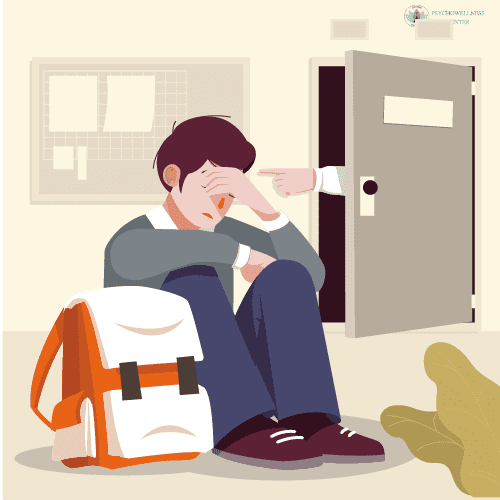Types of Peer Pressure in School and College

Peer pressure is a common experience for students in school and college, where peers influence each other to adopt certain behaviors or attitudes. Sometimes, this influence can be positive, like encouraging good grades or healthy habits. However, it can also lead to negative outcomes, such as risky behaviors or compromising personal values. In this article, we explore the different types of peer pressure students often encounter in educational settings. We'll discuss how these pressures can affect students and provide strategies to help navigate them effectively.
Types of Peer Pressure
1. Behavioral Peer Pressure: Behavioral peer pressure is when peers encourage or influence each other to participate in certain actions or behaviors. This can include trying drugs or alcohol, skipping classes, cheating on tests, or engaging in risky activities such as dangerous dares or reckless driving. These behaviors often stem from a desire to fit in or be accepted by peers, but they can have serious consequences for personal safety, academic integrity, and overall well-being.
2. Appearance and Fashion Peer Pressure:- Appearance and fashion peer pressure in schools and colleges often revolves around the pressure students feel to conform to specific standards of appearance and fashion trends dictated by their peers. This can include wearing particular brands of clothing, following current hairstyle trends, or adhering to body image expectations set by their social circle. Such pressures can influence students' self-perception and social acceptance, leading them to invest significant time and resources into aligning with these external standards.
3. Academic Peer Pressure:- Academic peer pressure is the influence peers exert on each other regarding academic performance and choices. It can manifest in several ways, including competing intensely for grades, succumbing to academic dishonesty to match peers' achievements, or feeling pressured to choose courses or career paths based on peer influence rather than personal interest. This pressure often stems from a desire to excel or maintain social standing among peers. Managing academic peer pressure involves prioritizing personal educational goals, maintaining integrity in academic pursuits, and seeking support from mentors or educators when navigating academic challenges.
4. Social Peer Pressure:- Social peer pressure encompasses the influence peers have on each other's social behaviors, friendships, and social status within the school or college settings. This pressure can manifest in various ways, such as feeling compelled to join specific friend groups, attend parties or social events, or participate in behaviors to gain acceptance or avoid social exclusion. Students often experience this pressure as they navigate social hierarchies and seek validation from their peers.
5. Peer Pressure in Relationships:- Peer pressure in relationships refers to the influence peers exert on each other's romantic relationships, dating behaviors, and attitudes towards intimacy. In school and college environments, students may feel pressured to start dating, define relationships according to peer expectations, or engage in activities they might not be comfortable with to conform to social norms. This pressure can impact how students perceive relationships and understand their own romantic experiences. Resisting negative peer influences in relationships involves prioritizing personal boundaries, communicating openly with partners, and seeking guidance from trusted adults or mentors to make informed decisions about dating and intimacy.
6. Attitude and Opinion Peer Pressure:- Attitude and opinion peer pressure involves peers influencing each other's beliefs, attitudes, and opinions on topics like politics, social issues, or cultural preferences. In school and college settings, students may feel pressured to adopt specific viewpoints or suppress their own opinions to fit in with dominant peer perspectives. This pressure can affect how students express themselves and contribute to discussions, potentially impacting their personal growth and intellectual development.
Impact of Peer Pressure
Peer pressure plays a pivotal role in shaping students' experiences and behaviors throughout their school and college years. On the positive side, it can serve as a motivating force, encouraging academic achievement, developing healthy habits, and promoting pro-social behaviors such as community involvement. Positive peer pressure can also contribute to the development of strong social bonds and a sense of belonging within the student community. However, negative peer pressure poses significant risks, potentially leading students towards risky behaviors like substance abuse, academic dishonesty, or compromising personal values to fit in with peers. This negative influence can contribute to heightened stress, anxiety, and impaired mental health.
Navigating Peer Pressure
Navigating peer pressure effectively requires a proactive approach and a good understanding of personal values and boundaries. Awareness is key, being able to recognize when peer pressure is influencing your decisions or behaviors allows you to pause and assess whether those actions align with your values. Developing assertiveness skills enables you to confidently say "no" to activities or behaviors that don't resonate with your beliefs or goals, despite peer expectations. Seeking support from a network of friends, mentors, or trusted adults provides guidance and encouragement in maintaining your individuality. Setting clear personal boundaries is important for establishing limits for yourself and sticking to them reinforces your integrity and self-respect. Ultimately, developing self-confidence and self-esteem empowers you to resist negative peer influences and make independent decisions that support your well-being and personal growth.
The Role of Counseling in Managing Peer Pressure
Counseling from the best psychologist can be important in helping students navigate peer pressure. Through teen therapy or individual therapy, students can explore their experiences in a safe space, develop strategies to resist negative influences, and build self-esteem. Counseling provides the tools to set healthy boundaries and make decisions aligned with personal values, empowering students to confidently manage social pressures and prioritize their mental well-being.
Conclusion
Peer pressure is a significant aspect of school and college life, influencing students' behaviors, attitudes, and social interactions. While peer influence can shape positive outcomes, it can also lead to detrimental effects if not understood carefully. By understanding the types of peer pressure and developing strategies to manage it effectively, students can maintain their individuality, make informed choices, and promote healthy relationships within their educational environments.
Psychowellness Center is dedicated to providing exceptional mental health care in Delhi NCR. Our team of experienced professionals is available across Vasant Vihar, Faridabad, and NOIDA, offering personalized support to help you navigate life’s challenges.
Contribution:- For professional mental health care, consult Dr. R.K. Suri, a top clinical psychologist, and Ms. Swati Yadav, a renowned counseling psychologist
Reference
Santrock, J. W. (2019). Life-Span Development (17th ed.). McGraw-Hill Education.
Steinberg, L., & Morris, A. S. (2001). Adolescent development. Annual Review of Psychology, 52(1), 83-110. https://doi.org/10.1146/annurev.psych.52.1.83
Brown, B. B., & Larson, J. (2009). Peer relationships in adolescence. In R. M. Lerner & L. Steinberg (Eds.), Handbook of Adolescent Psychology: Contextual Influences on Adolescent Development (3rd ed., Vol. 2, pp. 74-103). Wiley.




SHARE